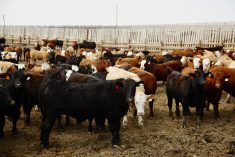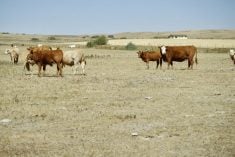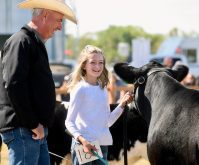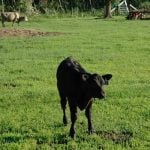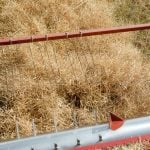Fed cattle
The local fed market continues to struggle. The wide basis has started to encourage additional U.S. buyer interest, but large carcass weights and longer lift times are making it difficult to stay current. Steer carcass weights are at near-record levels, at 972 lbs. in mid-November, which compares to 946 lbs. last year.
The average fed steer price in Alberta in mid-November was $183.42/cwt, an improvement of $2.80/cwt from the previous four weeks and $27/cwt higher than the same week in 2021. When comparing year-over-year prices, the improvement in 2022 is quickly consumed by the increased costs and higher break-even points. The fed cattle basis is extremely wide. The cash-to-cash basis is currently -$27.06/cwt, and the five-year average is closer to -$5/cwt for this time of year.
Read Also
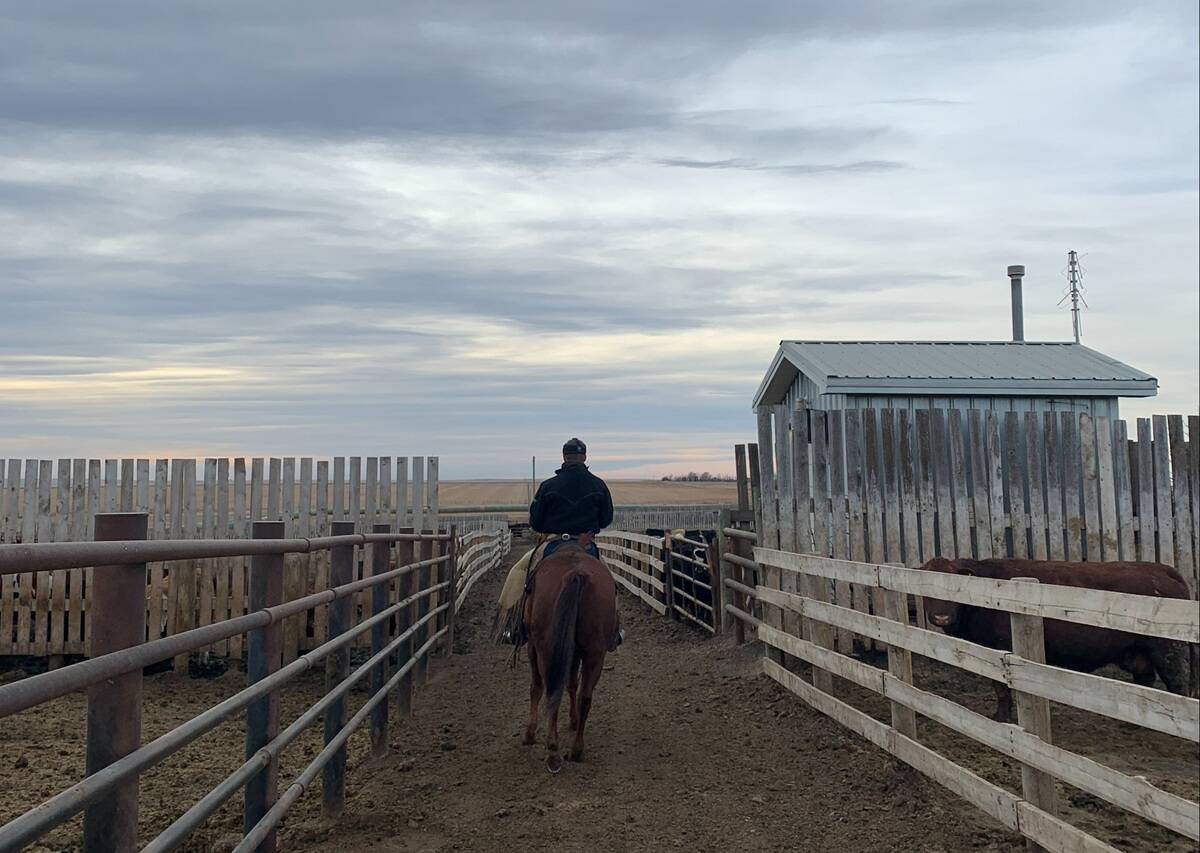
Pen riders still better than tech at detecting respiratory disease in feedlot cattle, says researcher
Recent research found that pen riders are better than tech at flagging signs of BRD in feedlot cattle
Usually, such a wide basis would encourage increased movement to the U.S. While buyer interest from south of the border is improving, fed cattle exports haven’t shifted yet. Live cattle trade for fed cattle was lower in September. However, as of late October, the total was still 11 per cent larger than last year at 390,419 head. Fed cattle production was unchanged from a year ago while steer slaughter dropped three per cent at 1,528,551 head. Heifer kill is four per cent higher at 858,110 head.
[RELATED] Market summary for late November
Deb’s outlook for fed cattle: Exports have been stronger than average through much of 2022. However, the impact of inflation in key beef importing markets is concerning. Locally, consumers struggle with increased costs on everything from household necessities to fuel. Beef demand generally shifts to lower-priced cuts as consumers look to spread their dollars further.
Buyers are currently comfortable with contracted inventory, giving them leverage as we move into a typically stronger seasonal market. Tightening front-end supplies in the U.S. may increase U.S. buyer interest in Canada and lend support to the market. However, in the near term the historically normal rally may look more like a steady-at-best market.
Feeder cattle
Despite high feed grain costs and seasonally larger supplies, the feeder calf market has held on considerably well. Through the fall run, the 550-lb. calf price moved from a peak in September of $273/cwt to a mid- November average of $267.59/cwt. While the price has declined seasonally, it hasn’t dropped as steeply as a year ago. September’s calf peak was 16 per cent higher than last September while the mid-November average is 29 per cent higher than the same week in 2021. The spread between steer and heifer calves is wider than in recent years.
[RELATED] Feed weekly outlook: Looming corn imports to keep lid on Prairie barley
The mid-November 550-lb. heifer average is $45/cwt back from steers while 450-lb. heifer calves are trading an average of $62/cwt lower than the same-weight steers. A year back, the spread between 550-lb. steers and heifers was $30/cwt while the difference in the 450-lb. weight class was $50/cwt. There are fewer heavy feeders available at auction this time of year. However the mid-November average for 850-lb. feeder steers was $229.75/cwt, down $11/cwt from September’s high but $47.62/cwt higher than the same week last year.
Despite the weak Canadian dollar, feeder exports slowed through September. At the same time, feeder imports increased sharply, with 40,000 head of feeder calves imported through the same month. Overall, Canada remains a net exporter in 2022 with a total to the end of October of 176,077 head of feeders exported. This is 63 per cent higher than a year earlier.
Deb’s outlook for feeder cattle: Feeder run volumes peaked in late October to early November and supplies will tightened. Most special calf sales are winding down for the year; however, winter storms have delayed calf marketing in some areas across the Prairies. Barley prices remain high, but reports of incoming corn landing in southern Alberta feedlots in December will help manage cost of gain. Calf prices will likely stabilize now that the bulk of the fall run has moved, with potential for price improvement if feed sources increase and cost of gain decreases. However, the largest positive effect on feeder prices will come if the fed market strengthens and feeding margins improve.
Non-fed cattle
Larger cow slaughter, increased beef imports, larger cold storage and seasonal fall run volumes softened trim prices and pressured non-fed prices. Seasonally, volumes are larger through the fall run as cull cows come to town. In addition, there have been more bred cow sales this fall. While forage stocks are better than a year ago, hay costs are still high, leaving producers cautious about whom to keep on the feed bill this winter.
The average D1,2 cow price by the second week of November had dropped to $89.79/cwt, down $14.21/cwt in four weeks and down $25.79/cwt from the high posted in August. Although the average cow price is lower, it’s still $28.89/cwt higher than a year ago and $13.50 above the five-year average D1,2 cow price. Cow slaughter in Canada in recent weeks has increased. However, as of early November, the total of 377,237 head matched that from a year ago.
Butcher bull prices have decreased as well. At mid-November, the average was $122.20/cwt. Bull exports are up 12 per cent from last year to 36,105 head, while domestic slaughter is down 15 per cent from last year at 12,938 head as of November 5.
Deb’s outlook for non-fed cattle: The fall run is ending, and most cull cattle have moved through the system. December should see feeder cow buyers show more interest as cows have a strong seasonal trend, which suggests a higher market at the start of the new year. Consumers looking to stretch their dollars will lean towards lower-cost grinding and trim meats, supporting non- fed prices. The non-fed market is likely nearing its fall low. An export floor and good demand for lower-priced cuts will support the market as we close out 2022 and start 2023.





